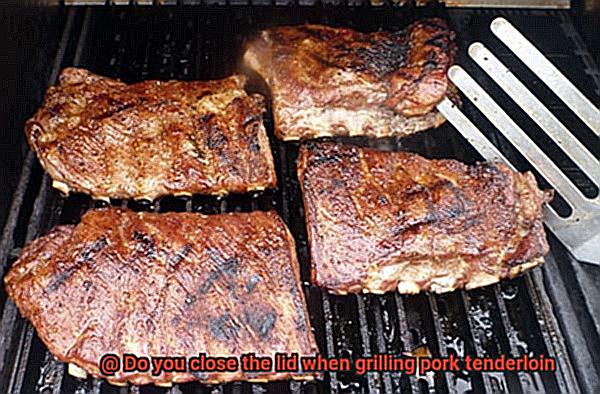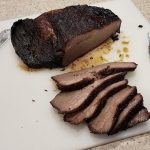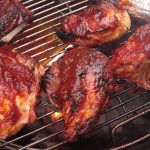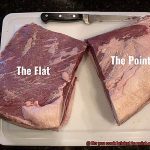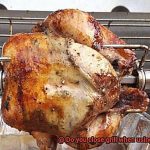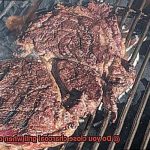Grilling pork tenderloin is a surefire way to achieve a perfectly cooked, juicy and delicious meal. However, there’s always the great debate: to close or not to close the lid? Some swear by it, others argue against it. So, what’s the verdict?
Before we get into that, let’s just take a moment to appreciate the beauty of pork tenderloin. It’s lean, tender and can be seasoned in countless ways. Whether you’re craving something smoky or sweet, this cut of meat will deliver mouthwatering results every time.
Now back to the question at hand: does closing the lid make a difference when grilling pork tenderloin? Proponents claim that it traps in heat and allows smoke to circulate around the meat for added flavor. Meanwhile, opponents argue that leaving the lid open ensures better temperature control and prevents overcooking.
Regardless of which side you’re on, there are some key things to keep in mind when grilling pork tenderloin. So let’s dive into some best practices for achieving a perfectly grilled meal – with or without the lid.
Contents
What is Pork Tenderloin?
Pork tenderloin is a lean, boneless cut of meat that is sourced from the pig’s back. It is renowned for its tenderness and is an excellent source of protein. What’s more, it is a versatile cut of meat that can be prepared in numerous ways, including grilling, roasting, and pan-searing.
When you’re purchasing pork tenderloin, it’s essential to select a piece that is pink in color, firm in texture, and has minimal fat on the exterior. The tenderloin should also be uniform in size and thickness to ensure even cooking. A pork tenderloin that weighs between 1 to 1.5 pounds is the ideal choice as it’s easy to handle and cook on the grill or in the oven.
Grilling pork tenderloin raises many questions, including whether it’s best to close the lid while cooking. The answer varies depending on certain factors. It’s recommended to close the lid while cooking pork tenderloin on a gas grill as it has a built-in thermometer that allows for better temperature control and even cooking. However, if you’re using a charcoal grill, leaving the lid open can help regulate the temperature more effectively.
Pork tenderloin has a mild flavor that pairs well with a variety of seasonings and marinades. Some popular seasonings include garlic, rosemary, thyme, and paprika. To add flavor and keep the meat moist during cooking, it’s crucial to marinate pork tenderloin before grilling.
Types of Grills: Gas vs Charcoal
Grilling pork tenderloin is an art, and the type of grill you use can make a significant difference in taste. Here are five sub-sections that explain the differences between gas and charcoal grills when it comes to grilling pork tenderloin.
Temperature Control:
One of the biggest differences between gas and charcoal grills is temperature control. Gas grills come with built-in thermometers that allow for precise temperature control, making them ideal for cooking pork tenderloin. This means you can set the temperature to exactly what you need and walk away, allowing the grill to do the work for you.
On the other hand, the temperature control on charcoal grills requires more attention and skill. You need to monitor the temperature regularly and add more charcoal as needed.
Smoky Flavor:
Charcoal grills are known for providing a smoky flavor that is hard to beat, while gas grills don’t produce as much smoke or ash. If you’re after that smoky flavor, a charcoal grill may be the way to go. The high heat from a charcoal grill creates a Maillard reaction that caramelizes proteins and adds a distinct flavor to the meat.
Convenience:
Gas grills are more convenient and easier to use than charcoal grills. They heat up quickly, and you can easily control the temperature with the turn of a knob. They also don’t require much maintenance and are easy to clean since they don’t produce as much ash or smoke. Charcoal grills take longer to heat up and require more attention while cooking.
Cleaning:
Cleaning your grill after use is essential for maintaining its longevity. Gas grills are easier to clean than charcoal grills because they don’t produce as much ash or smoke. You can simply turn off the grill and wipe it down with a damp cloth or sponge. Charcoal grills require more cleaning and maintenance since they produce more ash and smoke. You need to clean the grates, ash tray, and interior of the grill after each use.
Thickness of Meat:
The thickness of the pork tenderloin also plays a role in whether or not you should close the lid when cooking. Thicker cuts of meat require longer cooking times, and closing the lid can help trap heat and smoke to ensure even cooking. However, if you’re using a gas grill, you don’t need to close the lid since it already provides an even heat distribution.
Should You Close the Lid on a Gas Grill?
The question on your mind is whether or not you should close the lid. Well, let’s dive into the factors to consider.
Closing the lid is a popular technique among grill enthusiasts as it helps create an even cooking environment and traps in heat. This is especially crucial when cooking thicker cuts of pork tenderloin. However, leaving the lid open can also have its benefits, such as achieving a crispy exterior.
But hold your horses. Closing the lid on a gas grill can lead to flare-ups caused by dripping fats and juices. This can result in uneven cooking and burnt or charred spots on your tenderloin. To prevent this, keep a close eye on your grill and adjust the temperature as needed.
So, should you close the lid or not? It depends on various factors. First, consider the thickness of your pork tenderloin. If it’s thin, leaving the lid open may suffice for even cooking. But if it’s thick, closing the lid will help ensure that heat is evenly distributed throughout the meat.
Next, factor in your desired level of doneness and personal preference for texture and flavor. Do you crave a crispy exterior or a tender, juicy interior? It’s worth experimenting with different techniques to find what works best for you and your specific cut of pork tenderloin.
Should You Close the Lid on a Charcoal Grill?
Grilling pork tenderloin on a charcoal grill is a culinary adventure that comes with a lot of decisions, including whether or not to close the lid. The question of whether to keep the lid closed or open can be a bit contentious among grilling experts. The answer is simple: it depends on your personal preference and the recipe you are using.
If you choose to close the lid on your charcoal grill while cooking pork tenderloin, you will benefit from the convection effect. This means that heat will circulate around your food and cook it evenly from all sides, resulting in a smokier flavor and more even cooking. Additionally, closing the lid helps to retain moisture and prevent flare-ups, which is especially important when grilling pork tenderloin since it can dry out quickly when overcooked.
On the other hand, leaving the lid open allows for more direct heat, which is perfect for achieving that coveted sear and crust on the outside of your meat. Additionally, keeping the lid open allows for better ventilation, preventing the buildup of smoke that can lead to bitter flavors. However, leaving the lid open may result in uneven cooking and an increased risk of flare-ups.
Thickness of the Pork Tenderloin
Calling all grill masters. If you want to nail that perfect pork tenderloin, then you need to know whether or not to close the lid while grilling. And the answer depends on the thickness of your meat.
A thicker cut of pork tenderloin will benefit from a closed lid during the cooking process. This allows for even heat distribution and prevents any uneven charring. On the other hand, if you’re working with a thinner cut, leaving the lid open will suffice as it cooks quickly and doesn’t require extra heat retention.
However, there are other crucial factors to consider when making this decision. For instance, high heat or charcoal grilling can cause flare-ups and excessive charring, so keeping the lid closed can help prevent these issues.
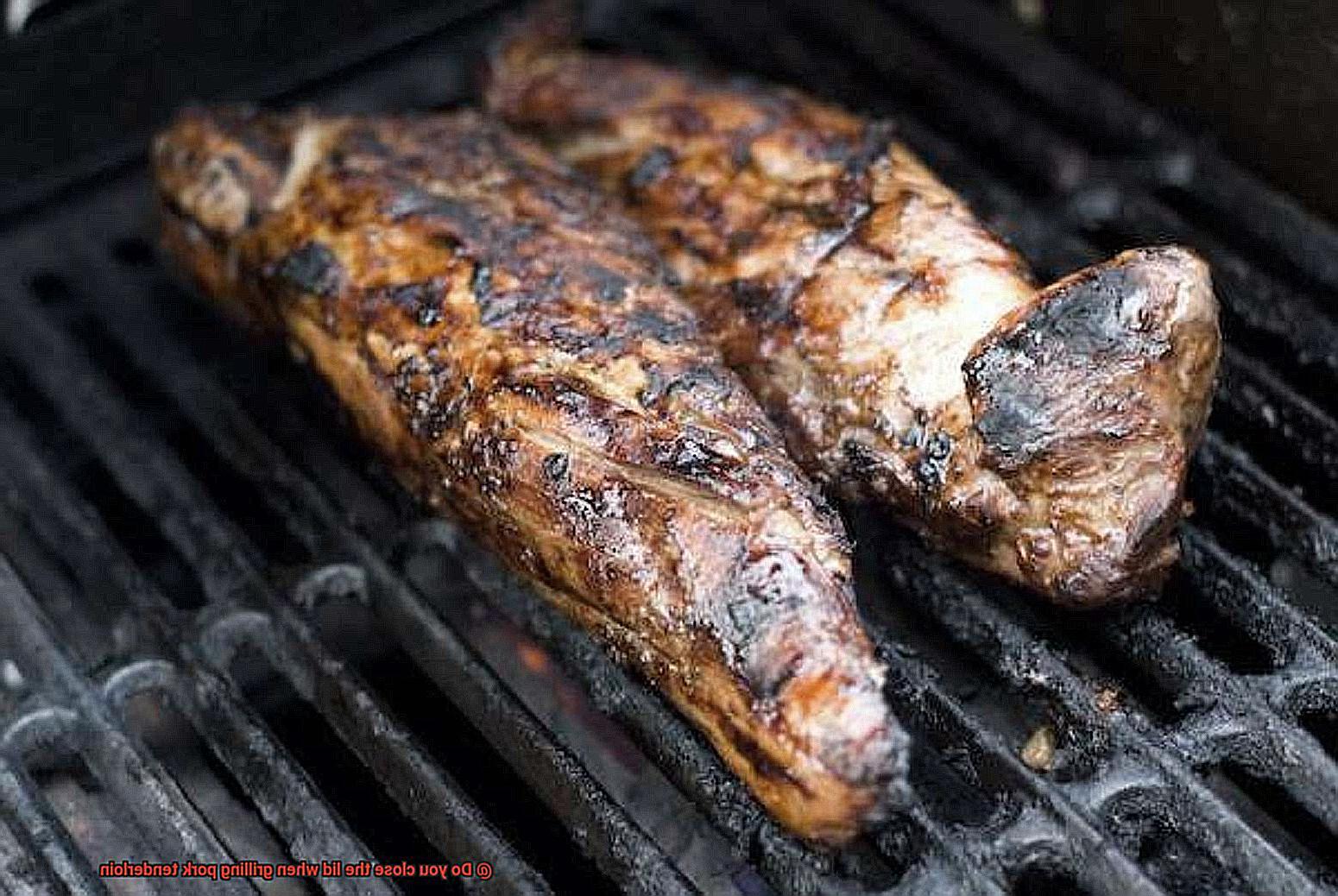
But here’s the thing: grilling is an art form that requires practice. With time and experience, you’ll develop a better sense of when to keep the lid open or closed when grilling pork tenderloin.
Temperature Control and Even Cooking
As a grill master, I know that achieving the perfect cook for pork tenderloin requires careful attention to temperature control and even cooking. There’s nothing quite like biting into a succulent and juicy pork tenderloin fresh off the grill, and with these tips, you can make that happen every time.
Firstly, preheating your grill is an absolute must. Skipping this step can result in uneven cooking, especially if you plan on closing the lid during cooking. Opening and closing the lid repeatedly can cause temperature fluctuations that can leave your pork tenderloin undercooked or overcooked.
Once your grill is preheated, it’s time to get that pork tenderloin on the grates. Depending on the thickness of your cut, you may want to consider closing the lid. Thicker cuts benefit from a closed lid for even heat distribution, while thinner cuts can be cooked with an open lid.
Closing the lid creates an oven-like environment that allows heat to penetrate the meat more thoroughly and evenly cook the pork tenderloin on all sides. This technique is particularly useful for thicker cuts of meat, like pork tenderloin. Plus, it locks in moisture which is essential for achieving a juicy and tender final product.
But don’t just close the lid and forget about it. Be sure to monitor the temperature of your grill throughout the cooking process. Maintaining a temperature of around 400-450°F for pork tenderloin is ideal. If the temperature drops too low, you may need to add more charcoal or turn up the gas burners to bring it back up. Conversely, if the temperature gets too high, briefly opening the lid can help release some heat and regulate the temperature.
Monitoring Temperature and Adjusting as Necessary
Grilling pork tenderloin is an art that requires precise temperature control. Achieving the ideal temperature range of 145-160°F can be challenging, but with the right techniques, you can cook up juicy and delicious pork tenderloin every time.
To begin with, it’s essential to close the lid of your grill to trap heat inside. This creates a convection effect that allows heat to circulate around the meat, resulting in even cooking. However, keeping a check on the temperature is just as crucial.
One way to monitor the temperature is by using a meat thermometer. Inserting it into the thickest part of the pork tenderloin gives you an accurate reading of its internal temperature. It’s recommended to check the temperature regularly and make adjustments as necessary.
Another way to keep an eye on and adjust the temperature is by adjusting the air vents on your grill. Opening them up allows more oxygen into the grill, increasing heat, while closing them restricts airflow and reduces heat. By regulating these vents, you can control and maintain a consistent temperature inside your grill.
It’s important to note that if the temperature is too high, it can cause the meat to burn or char on the outside while remaining undercooked on the inside. Conversely, if it’s too low, it can result in uneven cooking, leaving some parts of the meat raw or undercooked.
ZwuPeRSxfOA” >
Conclusion
In summary, grilling pork tenderloin is a delectable way to savor this versatile slice of meat. Whether you prefer a savory or sweet flavor, there are endless seasoning and preparation options for the grill. However, the question of whether to close the lid while grilling remains an ongoing debate among grill enthusiasts.
Some swear by closing the lid to trap in heat and smoke for added flavor, while others believe that leaving it open permits better temperature control and prevents overcooking. Ultimately, your decision hinges on various factors such as the type of grill used, thickness of the meat, and personal preference.
Regardless of whether you opt to close or leave the lid open, adhering to some best practices when grilling pork tenderloin is crucial. Preheating your grill, monitoring temperature with a meat thermometer, and adjusting air vents as necessary can help ensure even cooking and avoid burning or charred spots.
With these pointers in mind, you can become a master at grilling pork tenderloin and relish an impeccably cooked and juicy meal every time.

